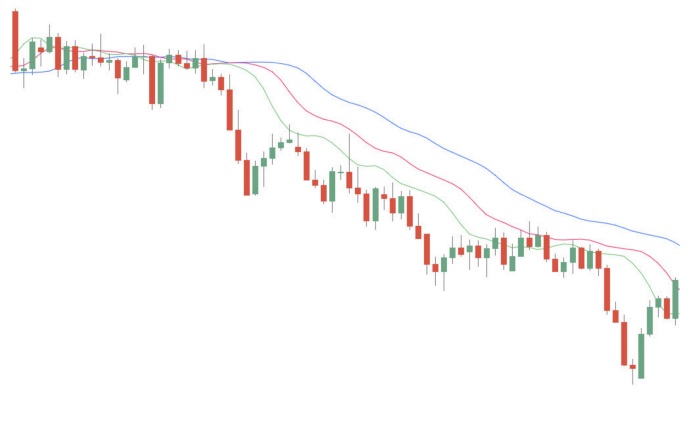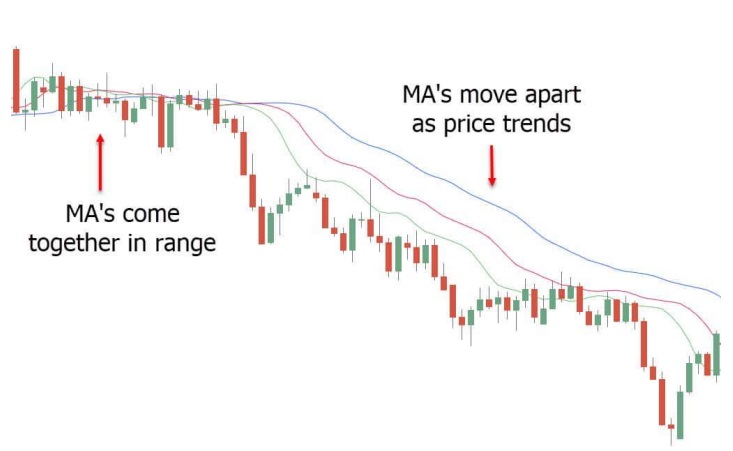One of the pioneers who delved into market psychology and trend tracking and created some widely-used indicators was famed trader Bill Williams. The Alligator indicator is one of his major creations, and this essay will study its utility in trading.
Table of Contents
- Understanding the Alligator Indicator
- Configuring the Alligator Indicator Settings
- Utilizing the Alligator Indicator in Your Trading
- Alligator Indicator Trading Examples
- Combining the Alligator Indicator with Other Tools
- Lastly
Understanding the Alligator Indicator
The inventor of the Alligator indicator, Bill Williams, claims that markets typically move in a trend only 15% to 30% of the time, with the remainder of the time being spent in sideways and range patterns. Williams thought that large traders make their biggest gains at periods of strong upward or downward movements. Therefore, he invented the Alligator indicator to help traders recognize when the market is in a trend or range pattern. The alligator’s jaw, teeth, and lips are the names of the three moving averages that make up this indicator. As further outlined in this article, traders can manage and spot potential trade opportunities by using these moving averages.

Configuring the Alligator Indicator Settings
Three simple moving averages with three different periods—5, 8, and 13—are used to build the Alligator indicator. These moving averages, when plotted, create the jaws, teeth, and lips of the Alligator.
- The blue line represents the jaw, which is a 13-period SMA smoothed by eight bars on subsequent values.
- The red line depicts the teeth, which is an eight-period SMA smoothed by five bars on successive values.
- The green line represents the lips, which is a five-period SMA smoothed by three bars on subsequent values.
You can determine whether the market is in a trend or range by watching how these moving averages converge or diverge after adding the Alligator indicator to your chart.
Utilizing the Alligator Indicator in Your Trading
By examining the relationship between the teeth, lips, and jaw using the Alligator indicator on your chart, you can find new trading chances and keep track of your open positions. The Alligator indicator is primarily used to determine whether the market is trending or in a range and to assess the strength of the trend.
As seen in the sample chart below, the alligator’s jaw, lips, and teeth move and line up with price movement all the time.
Using the Alligator indicator is as easy as looking at the jaw, teeth, and lips. When these moving averages are entwined or close together, which indicates a range-bound market, it is believed that the alligator is dozing. It is advised that you hold off on taking any new positions based on this signal during this period. The alligator awakens and begins searching for new locations to hunt bulls or bears.
When the moving averages begin to expand in a specific direction and the direction continues, the alligator is awake and eating, indicating the emergence of new trends. When the moving averages converge, the market is returning to a range-bound period because the alligator has had enough. It is wise to think about closing any open accounts during this period until the alligator wakes up once more.

Alligator Indicator Trading Examples
As was already stated, monitoring the Alligator indicator to determine whether it is eating or sleeping is an effective way to trade. It’s usually a good idea to end any open positions and avoid taking on any new ones when the moving averages start to converge or intertwine. On the other hand, it’s a sign to start searching for new trades when the Alligator lines start to clearly trend higher or lower.
The three moving averages converge and travel sideways when the alligator snoozes in the example chart below. After this period of consolidation, the Alligator reawakens, and the indicator keeps moving upward, indicating a possible opportunity for long trades. It may be time to secure profits from the upward trend when the Alligator lines start to move lower.
Combining the Alligator Indicator with Other Tools
Even though the Alligator indicator works well on its own, it is frequently beneficial to use it in conjunction with other technical analysis tools and chart patterns to improve accuracy. Technical indicators and chart patterns are some of the easiest combinations.
For instance, if the Alligator is trending higher, you could spot long trades by adding additional chart patterns and technical analysis tools, improving the chances that your trades will be profitable. You could also combine the Alligator with other indicators, such as the MACD, RSI, or your other favored indicators.
Lastly
The Alligator indicator is simple to use, but before using it with real money, you must fully test it in your trading. Like any new indicator, it is recommended to try it on practice charts using fictitious money so that you are familiar with its workings and quirks.
You could incorporate the Alligator indicator into your live trading once you have gained a degree of comfort with it. By doing this, you can prevent making inexperienced errors and make sure you’re ready to use it successfully with your current strategies.

